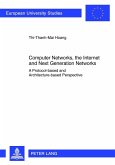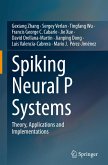This thesis studies the capability of spiking recurrent neural network models to memorize dynamical pulse patterns (or firing signals). In the first part, discrete-time firing signals (or firing sequences) are considered. A recurrent network model, consisting of neurons with bounded disturbance, is introduced to analyze (simple) local learning. Two modes of learning/memorization are considered: The first mode is strictly online, with a single pass through the data, while the second mode uses multiple passes through the data. In both modes, the learning is strictly local (quasi-Hebbian): At any given time step, only the weights between the neurons firing (or supposed to be firing) at the previous time step and those firing (or supposed to be firing) at the present time step are modified. The main result is an upper bound on the probability that the single-pass memorization is not perfect. It follows that the memorization capacity in this mode asymptotically scales like that of the classical Hopfield model (which, in contrast, memorizes static patterns). However, multiple-rounds memorization is shown to achieve a higher capacity with an asymptotically nonvanishing number of bits per connection/synapse. These mathematical findings may be helpful for understanding the functionality of short-term memory and long-term memory in neuroscience. In the second part, firing signals in continuous-time are studied. It is shown how firing signals, containing firings only on a regular time grid, can be (robustly) memorized with a recurrent network model. In principle, the corresponding weights are obtained by supervised (quasi-Hebbian) multi-pass learning. The asymptotic memorization capacity is a nonvanishing number measured in bits per connection/synapse as its discrete-time analogon. Furthermore, the timing robustness of the memorized firing signals is investigated for different disturbance models. The regime of disturbances, where the relative occurrence-time of the firings is preserved over a long time span, is elaborated for the various disturbance models. The proposed models have the potential for energy efficient self-timed neuromorphic hardware implementations.
Bitte wählen Sie Ihr Anliegen aus.
Rechnungen
Retourenschein anfordern
Bestellstatus
Storno








